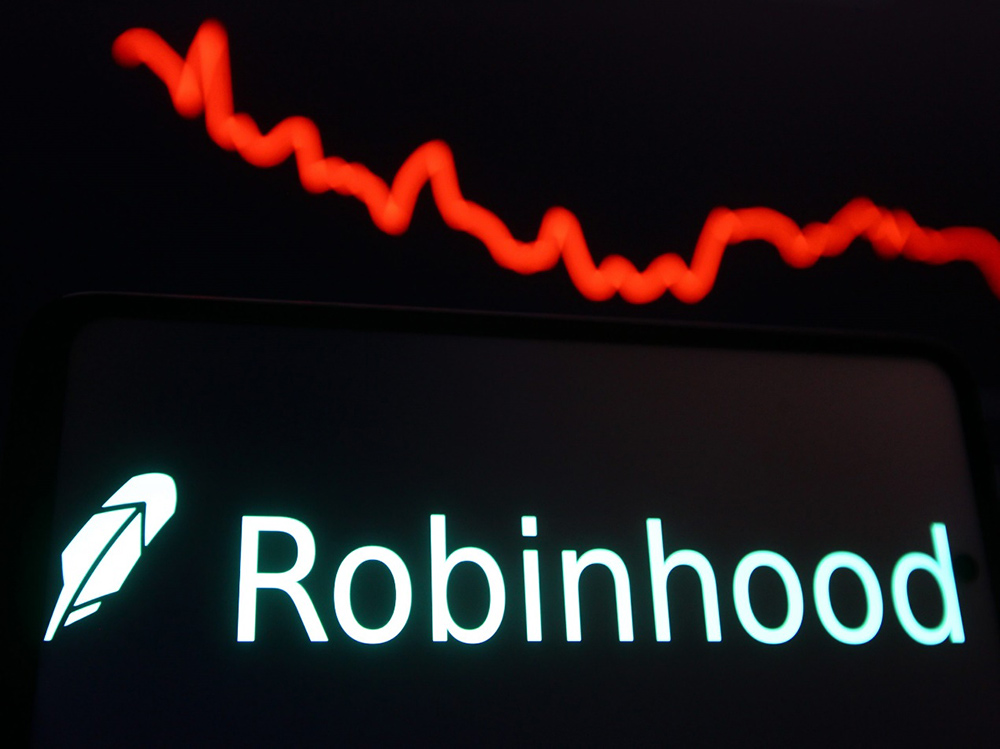
一个多世纪以前,北大西洋上发生了在和平时代航海史上最为惨重的一次灾难——“泰坦尼克号”沉没。当时,这艘船是有史以来最大、最先进的商业船舶。来自世界各地的乘客都希望乘坐这艘海洋科技史上的伟大奇迹,体验一次跨大西洋航行。
泰塔尼克号号称永不沉没,但事实并非如此。在这艘船最终撞上一座冰山之前,船员们收到了至少六次有关冰山的警告。当泰坦尼克号开始沉没时,被永不沉没的说法欺骗的无辜乘客们才发现,这艘排水量达45,000吨的“梦想之船”所配备的救生艇只能供一半乘客使用。
结果是在2,224名乘客中,有1,500人不幸遇难,其中超过一半是三等舱乘客。泰坦尼克号的经营者白星航运公司(White Star Line)在事后遭遇诉讼,案件一直上诉至美国最高法院(U.S. Supreme Court)。经过漫长的审理,白星航运最终支付了66.4万美元(相当于今天的1,800万美元),达成和解。
今天正在争抢在线交易市场份额的经纪商们,可以从这场悲剧中得到许多教训。Robinhood就是很好的例子。这在眼下尤其重要,因为这家公司正准备上市。
Robinhood知道或者本应该知道,前方有一座“资本的冰川”,但它依旧在邀请人们“登船”,甚至通过提供“免费股”来吸引潜在投资者。
今年早些时候,大量散户(许多人系首次进行股票投资)蜂拥至Robinhood平台,参与交易游戏驿站(GameStop)和AMC娱乐公司(AMC Entertainment)等所谓的“网红股”。这些股票的价格随之飙升,迫使做空这些股票的大型投资机构回补空头,买入股票。Robinhood平台上的交易量激增,资金账户大幅增加。
2021年1月28日上午,该公司重重地撞上了众所周知的冰山,并厚颜无耻地限制13只股票“只能进行平仓”交易。突然之间,投资者通过Robinhood账户只能持有或出售游戏驿站的股票;但被禁止购买股票。Robinhood的交易限制,导致认购需求减少,受限制股票价格也随之下跌,但其客户却只能眼睁睁看着他们的投资组合暴跌。
Robinhood的客户没有“救生艇”,投资者的大量收益成了泡影。另一方面,一些“头等舱乘客”却顺利上岸,比如持有大量空头的机构。
散户们愤怒不已。虽然该公司的首席执行官向美国消费者新闻与商业频道(CNBC)表示,限制措施是“先发制人”和“正常操作”,但对该公司提起的集体诉讼很快就达到数十起。大多数人所说的“网红股狂潮”在法院中被称为“2021年1月空头挤兑交易诉讼”,包括在美国各地提起的55起诉讼。(笔者是法院任命的原告指导委员会四名律师之一,负责处理针对Robinhood和其他经纪商提起的跨区诉讼。)
Robinhood对其行为列举了许多毫无说服力的理由。不过,只有一条貌似合理:它需要满足清算所的保证金要求,这意味着Robinhood需要在交易清算所中存入足够的保证金,才可以继续处理交易。
但清算所的要求并不新鲜,泰坦尼克号撞上的冰山也并非突然出现。就在Robinhood做出限制交易的可疑决定前几天,Robinhood在苹果公司(Apple)的应用商店(App Store)一度飙升到排行榜首位,当时它就清楚清算所的规则。它知道,大量增加的应用程序下载量是源于在社交媒体上兴起的网红股狂潮,也就是它最终限制交易的股票。
但Robinhood并没有停止广告宣传或者提供免费股,来增加用户参与。它还在继续销售船票,等到它魂断海上那一天,乘客们只能眼睁睁看着它沉没。
监管者已经注意到了风险,Robinhood的投资者以及考虑投资该市场的人们也应该引起重视。自去年12月以来,Robinhood共向美国证券交易委员会(SEC)和美国金融业监管局(Financial Industry Regulatory Authority)支付了大约1.35亿美元,用于和解与其大量使用订单流付款(即公司将交易引流给其他机构进行处理并从中获得报酬)误导客户、应用宕机和未履行最佳执行义务(即经纪商必须尽量以对客户最有利的方式执行客户的交易)等有关的诉讼。与此同时,Robinhood在美国各地方法院中辩护称,它只对客户承担最低受托责任。
监管部门似乎日益关注Robinhood的状况,但这并没有引起散户们同等程度的担忧。Robinhood第一季度收入5.22亿美元,是去年的四倍以上,其资金账户(1,800万,并且仍然在持续增加)比去年同期翻了一番以上。或许是“免费交易”令投资者们对危险视而不见,但散户们应该开始问问自己:这个平台对客户的资金不提供任何保护,还反复声称其对客户只有最低法定义务,同时却鼓吹自己“代表普通投资者”,他们是否做好了在这样一个平台上交易的准备?(财富中文网)
本文作者莫里斯•D•佩萨是佩萨律师事务所(Pessah Law Group)的创始人。
翻译:刘进龙
审校:汪皓
一个多世纪以前,北大西洋上发生了在和平时代航海史上最为惨重的一次灾难——“泰坦尼克号”沉没。当时,这艘船是有史以来最大、最先进的商业船舶。来自世界各地的乘客都希望乘坐这艘海洋科技史上的伟大奇迹,体验一次跨大西洋航行。
泰塔尼克号号称永不沉没,但事实并非如此。在这艘船最终撞上一座冰山之前,船员们收到了至少六次有关冰山的警告。当泰坦尼克号开始沉没时,被永不沉没的说法欺骗的无辜乘客们才发现,这艘排水量达45,000吨的“梦想之船”所配备的救生艇只能供一半乘客使用。
结果是在2,224名乘客中,有1,500人不幸遇难,其中超过一半是三等舱乘客。泰坦尼克号的经营者白星航运公司(White Star Line)在事后遭遇诉讼,案件一直上诉至美国最高法院(U.S. Supreme Court)。经过漫长的审理,白星航运最终支付了66.4万美元(相当于今天的1,800万美元),达成和解。
今天正在争抢在线交易市场份额的经纪商们,可以从这场悲剧中得到许多教训。Robinhood就是很好的例子。这在眼下尤其重要,因为这家公司正准备上市。
Robinhood知道或者本应该知道,前方有一座“资本的冰川”,但它依旧在邀请人们“登船”,甚至通过提供“免费股”来吸引潜在投资者。
今年早些时候,大量散户(许多人系首次进行股票投资)蜂拥至Robinhood平台,参与交易游戏驿站(GameStop)和AMC娱乐公司(AMC Entertainment)等所谓的“网红股”。这些股票的价格随之飙升,迫使做空这些股票的大型投资机构回补空头,买入股票。Robinhood平台上的交易量激增,资金账户大幅增加。
2021年1月28日上午,该公司重重地撞上了众所周知的冰山,并厚颜无耻地限制13只股票“只能进行平仓”交易。突然之间,投资者通过Robinhood账户只能持有或出售游戏驿站的股票;但被禁止购买股票。Robinhood的交易限制,导致认购需求减少,受限制股票价格也随之下跌,但其客户却只能眼睁睁看着他们的投资组合暴跌。
Robinhood的客户没有“救生艇”,投资者的大量收益成了泡影。另一方面,一些“头等舱乘客”却顺利上岸,比如持有大量空头的机构。
散户们愤怒不已。虽然该公司的首席执行官向美国消费者新闻与商业频道(CNBC)表示,限制措施是“先发制人”和“正常操作”,但对该公司提起的集体诉讼很快就达到数十起。大多数人所说的“网红股狂潮”在法院中被称为“2021年1月空头挤兑交易诉讼”,包括在美国各地提起的55起诉讼。(笔者是法院任命的原告指导委员会四名律师之一,负责处理针对Robinhood和其他经纪商提起的跨区诉讼。)
Robinhood对其行为列举了许多毫无说服力的理由。不过,只有一条貌似合理:它需要满足清算所的保证金要求,这意味着Robinhood需要在交易清算所中存入足够的保证金,才可以继续处理交易。
但清算所的要求并不新鲜,泰坦尼克号撞上的冰山也并非突然出现。就在Robinhood做出限制交易的可疑决定前几天,Robinhood在苹果公司(Apple)的应用商店(App Store)一度飙升到排行榜首位,当时它就清楚清算所的规则。它知道,大量增加的应用程序下载量是源于在社交媒体上兴起的网红股狂潮,也就是它最终限制交易的股票。
但Robinhood并没有停止广告宣传或者提供免费股,来增加用户参与。它还在继续销售船票,等到它魂断海上那一天,乘客们只能眼睁睁看着它沉没。
监管者已经注意到了风险,Robinhood的投资者以及考虑投资该市场的人们也应该引起重视。自去年12月以来,Robinhood共向美国证券交易委员会(SEC)和美国金融业监管局(Financial Industry Regulatory Authority)支付了大约1.35亿美元,用于和解与其大量使用订单流付款(即公司将交易引流给其他机构进行处理并从中获得报酬)误导客户、应用宕机和未履行最佳执行义务(即经纪商必须尽量以对客户最有利的方式执行客户的交易)等有关的诉讼。与此同时,Robinhood在美国各地方法院中辩护称,它只对客户承担最低受托责任。
监管部门似乎日益关注Robinhood的状况,但这并没有引起散户们同等程度的担忧。Robinhood第一季度收入5.22亿美元,是去年的四倍以上,其资金账户(1,800万,并且仍然在持续增加)比去年同期翻了一番以上。或许是“免费交易”令投资者们对危险视而不见,但散户们应该开始问问自己:这个平台对客户的资金不提供任何保护,还反复声称其对客户只有最低法定义务,同时却鼓吹自己“代表普通投资者”,他们是否做好了在这样一个平台上交易的准备?(财富中文网)
本文作者莫里斯•D•佩萨是佩萨律师事务所(Pessah Law Group)的创始人。
翻译:刘进龙
审校:汪皓
Over a century ago, one of the deadliest peacetime disasters in maritime history occurred in the North Atlantic Ocean—the sinking of the Titanic. At the time, the ship was one of the largest and most advanced commercial vessels ever built. Patrons from across the world swarmed to experience a transatlantic crossing on this behemoth marvel of maritime technology.
The Titanic was regarded as unsinkable, but it wasn’t. Before the ship’s untimely collision with an iceberg, its crew received at least six warnings about—you guessed it—icebergs. When the Titanic began to sink, innocent passengers duped by the narrative of unsinkability would learn that the 45,000-ton “ship of dreams” only had enough lifeboats for half of its 2,224 passengers.
The result: a 1,500-person body count, of which more than half were “third-class” passengers. Lawsuits followed, and after a lengthy legal battle that reached the U.S. Supreme Court, the Titanic’s operator, White Star Line, settled the claims for $664,000 (about $18 million today).
Many lessons can be drawn from this tragedy, some of which are relevant to today’s brokerages jockeying for their piece of online trading market share. Robinhood is a case in point. This is especially important now, as the company prepares to go public.
Robinhood knew, or should have known, that a capital iceberg was on the horizon, but it kept inviting people to sail on its ship and even offered “free stock” to entice would-be investors.
Earlier this year, retail investors (many investing for the first time) poured into Robinhood’s app to trade in so-called “meme stocks” like GameStop and AMC Entertainment. This sent prices in the securities soaring, forcing large institutions with short positions to cover their bets and pay up. The volume in trading on Robinhood’s platform spiked, and the company experienced a meteoric rise in funded accounts.
Then, on the morning of Jan. 28, 2021, the company slammed into the proverbial iceberg and brazenly restricted trading in 13 securities to “position closing only.” Suddenly, the only thing you could do with GameStop on your Robinhood account was hold or sell; buying was prohibited. Robinhood clients watched as the value of their portfolios plummeted due to the only effect that the brokerage’s restrictions could have: a decrease in buying demand, and, correspondingly, a decrease in share price of the restricted securities.
There was no lifeboat for Robinhood clients, and an unspeakable amount of investor gains were erased. On the other hand, some first-class passengers—institutions holding significant short positions, for example—did make it ashore.
Retail investors were furious, and although the company’s CEO insisted to CNBC that the restrictions were “preemptive” and part of “normal operations,” dozens of class-action lawsuits swiftly followed. Today, what most people refer to as the “meme stock frenzy” is known in court as the In Re January 2021 Short Squeeze Trading Litigation, a consolidation of 55 lawsuits from across the country. (I am one of four lawyers on a court-appointed plaintiffs’ steering committee handling the multi-district litigation against Robinhood and other brokers.)
Robinhood advanced numerous lackluster justifications for its actions. Only one seemed remotely reasonable: namely, the need to satisfy clearinghouse deposit requirements—which essentially means Robinhood needed to deposit more money with trading clearinghouses in order to be allowed to continue processing trades.
But clearinghouse requirements are nothing new, and neither are icebergs. Robinhood knew it was subject to clearinghouse rules when it soared to number one on the App Store in the days leading up to its dubious decision to restrict trading. It knew that the influx of users downloading its app was due to the frenzy that was being whipped up on social media around the very securities it eventually restricted.
Yet Robinhood did not stop advertising or offering free stock to increase user engagement. It kept selling tickets to the voyage, and then, when it couldn’t make it across the ocean, its passengers watched as the ship went down.
Regulators have taken note, and so should Robinhood investors and those thinking of investing in the market. Since December, the company has paid about $135 million in collective settlements to the SEC and Financial Industry Regulatory Authority (FINRA) for allegations that it misled customers about its prominent use of payment for order flow (in which firms are compensated for directing trades to other institutions for processing), outages on its app, and its failure to satisfy its duty of best execution (which means the broker must attempt to execute a customer’s trade in the way that is most advantageous to the customer). Meanwhile, Robinhood continues to argue in courts around the country that it owes minimal fiduciary duties to its clients.
While regulators seem increasingly concerned, retail investors have not all reacted with the same level of worry. Robinhood’s $522 million first quarter revenue is more than four times what it was last year, and its funded accounts (18 million and counting) more than doubled in that same period. Perhaps it is the allure of “free trades” that causes investors to turn a blind eye, but retail investors should start asking themselves if they are prepared to trade on a platform that offers zero protection for their money, and argues repeatedly that it owes minimal legal duties to its clients while it says it “stands for everyday investors.”
Maurice D. Pessah is the founder of Pessah Law Group.






